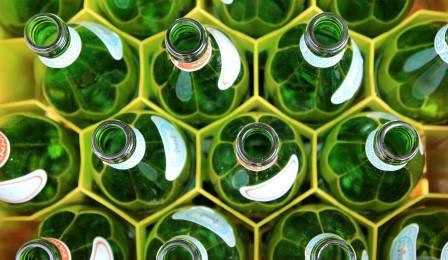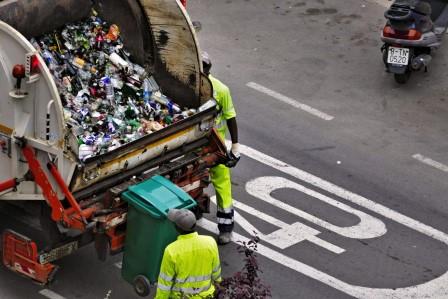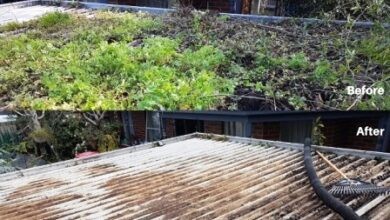Eco-Friendly Waste Disposal Techniques in Sydney

If you care about the environment, one way you can help is by sorting your waste into different categories and recycling certain items that would otherwise end up in a yellow bin.
Organic waste that is sent to landfill releases greenhouse gases that pollute air, water and soil and also harm wildlife populations. Landfills pose additional issues for their surrounding communities.
Recycling
Recycling is an eco-friendly waste disposal technique that transforms used products into new ones, thus conserving natural resources and decreasing landfill or incinerator waste disposal rates. Recycling also saves energy consumption while providing employment opportunities to people.
Recycling should be seen as part of our society’s ecosystem rather than as something unnecessary – therefore, it is imperative that we use secondhand goods with caution before recycling what is no longer necessary or discard it properly; otherwise the unchecked growth of wastes could prove disastrous for all involved.
Recycling helps conserve natural resources like paper. Recycled paper reduces tree cutting, while glass containers, aluminum foil, plastic items and textiles can all be recycled into rags or vintage clothing fashioning projects.
Unfortunately there remains much waste that cannot be recycled (such as plastic straws and bags from takeout containers and yogurt containers) being washed into oceans where they emit dangerous gases into the air as well as pollute water supplies and harm wildlife populations.
Recycling also has numerous other advantages. Recycling helps relieve landfills and incinerators of toxic waste by providing energy for factories and homes alike, protecting the environment through reduced greenhouse gas emissions, decreasing raw material imports and improving energy security. You can learn more about the source of greenhouse gas emissions by clicking the link.
Recycling may seem like an attractive solution, but it should be remembered that its implementation does not make recycling an absolute solution. There are other tools and techniques that must be utilized alongside recycling in order to achieve a healthy environment.
Recycling makes sense in specific economic situations such as prosperity and inexpensive raw materials being available; participation and incentives must also exist in public policies promoting recycling as without these measures, businesses and consumers will ignore its environmental costs that do not reflect in their private transactions.
Waste disposal is an ongoing problem that requires a multi-faceted solution in order to find and implement the best possible policies when it comes to helping to heal our earth.
Additional eco-friendly methods of waste disposal include bioremediation and energy conversion, with bioremediation being particularly useful for hazardous materials.
Bioremediation uses the natural degradation process to turn toxic materials into non-hazardous products – this approach has long been used as an eco-friendly replacement to landfills.

Bioremediation
Microorganisms provide an eco-friendly method of degrading and eliminating pollutants, making this waste disposal technique an eco-saver.
Used across various environments from soil to water and air, microorganisms have proven themselves capable of treating various industrial pollutants including petroleum and organic contaminants as well as heavy metals from the environment. They’re even an effective means of extracting heavy metals.
Microorganisms break down these harmful substances into simpler forms that are easily metabolized by microbes – creating more sustainable solutions than ever before for environmental problems!
Bioremediation is a complex process, and its outcomes depend on many variables at each site.
Biodegradation depends on factors like microbial activity, concentrations of contaminants and environmental conditions so before initiating bioremediation it is crucial that costs and effectiveness are assessed thoroughly by professionals.
Biostimulation and bioaugmentation are two techniques to encourage microorganism growth in polluted soil.
With biostimulation, nitrogen or phosphorus can be added to help the organisms break down pollutants more effectively; with bioaugmentation specific organisms are added in order to promote their growth and activity; both methods allow microorganisms to transform chemicals into less harmful forms.
Converting non-recyclable materials into energy is another eco-friendly waste disposal option, and can be achieved via various techniques, including anaerobic digestion and plasma gasification.
Anaerobic digestion utilizes animal manure and human waste as feedstock to produce biogas while plasma gasification offers more cost-effective and eco-friendly methods of creating methane-rich biogas from hazardous waste.
Eco-friendly waste disposal practices are essential to protecting our environment and helping nature repopulate itself, thus relieving landfills of their burden while conserving natural beauty on Earth.
In addition, this form of disposal saves energy and resources through using renewable and recyclable materials while avoiding toxic compounds which could threaten human health.
Bioremediation as a means of cleaning industrial waste is an environmentally safe and cost-effective method of eliminating pollutants without endangering humans or nature.
Bioremediation technology is relatively new but inexpensive, having shown great promise at treating oil spills and other forms of pollution in multiple settings across multiple environments – it may become mainstream for industrial waste treatment in the near future.
Converting waste into energy
In Addition to recycling, another eco-friendly waste disposal method is turning non-recyclable trash into energy through processes such as gasification, pyrolysis, and anaerobic digestion.
This practice reduces carbon emissions while providing a renewable source of power – cutting down fossil fuel costs while helping lower landfill emissions at once!
Waste-to-energy plants convert organic waste into usable energy and help reduce greenhouse gas emissions, with electricity produced being distributed to households, businesses, or sold into the grid; heat produced can then be used for heating water or local heating networks. This makes the waste-to-energy process particularly ideal for high volume producers like cities or industrial plants.
Many common waste-to-energy processes involve incineration, where organic materials such as food scraps and paper are burned to generate electricity.
Other processes, including gasification and pyrolysis, may produce biogas or ethanol production for bioenergy or ethanol production, providing valuable green energy solutions and helping reduce landfill trash loads. These methods make up part of our green energy agenda while simultaneously decreasing landfill trash loads.
Recycling is the best way to lower your environmental impact and encourage eco-friendly goods production by consumer goods companies. Avoid non-recyclable products and plastic use and limit what plastic can be recycled as much as possible to make a statement about what matters to the planet.
Furthermore, encourage consumer goods companies not to produce items that cannot be recycled by asking them not to produce such goods in future production runs.
Prior to recent technological advancements, most waste was either burned in incineration plants or sent directly to landfills for disposal. But recent advances have decreased landfill usage while improving collection systems.

Landfill
Before recently, people would dispose of their trash in open-burning waste pits that posed both health and environmental hazards. These pits released toxic gases into the air, caused respiratory diseases, polluted groundwater sources, and eliminated wildlife habitat.
Today’s landfills are designed to safeguard the environment by preventing contamination; construction must follow all regulations carefully while having composite liners on top of waste as well as perforated pipes that collect liquids that emerge from it and groundwater testing wells installed for monitoring groundwater quality.
As waste decomposes in landfill, methane gas is released – a greenhouse gas which absorbs heat and contributes to climate change. Modern landfills have found ways to harness this methane by installing extraction wells that pipe it to treatment areas before sending it onward to power plants that generate electricity or other forms of energy.
Furthermore, using special plastic covers on landfills may reduce methane release while simultaneously preventing other dangerous gases from forming – helping the planet remain clean for future generations.

One way to lessen the impact of landfills is through composting or recycling as much material as possible, something many landfills in Australia now provide as part of their services.
Composting saves costs while simultaneously creating valuable resources. This approach is also better for the environment since less transport of rubbish needs to take place.
Landfills may not do much to combat pollution, but they are essential in providing secure storage of hazardous waste such as paints, solvents and other chemicals used in manufacturing and construction.
To reduce their impact, one effective strategy would be promoting waste reduction and recycling through education programs and encouraging citizens to recycle as often as possible. Rubbish removal experts can help you reduce your waste with educational resources and other specialized plans. They can make it fast and easy for you to be eco-friendly.
Communities should also be encouraged to plant trees and vegetation near landfills to minimize erosion and water runoff, thus helping reduce odors and airborne pollutants.




